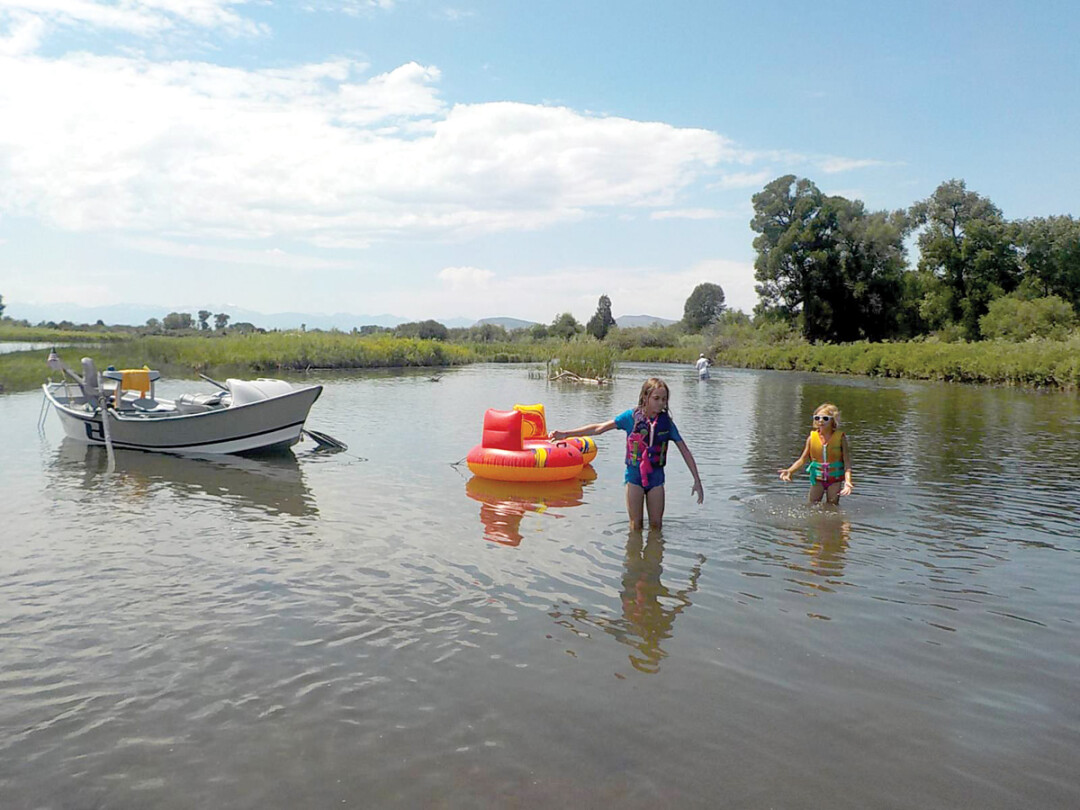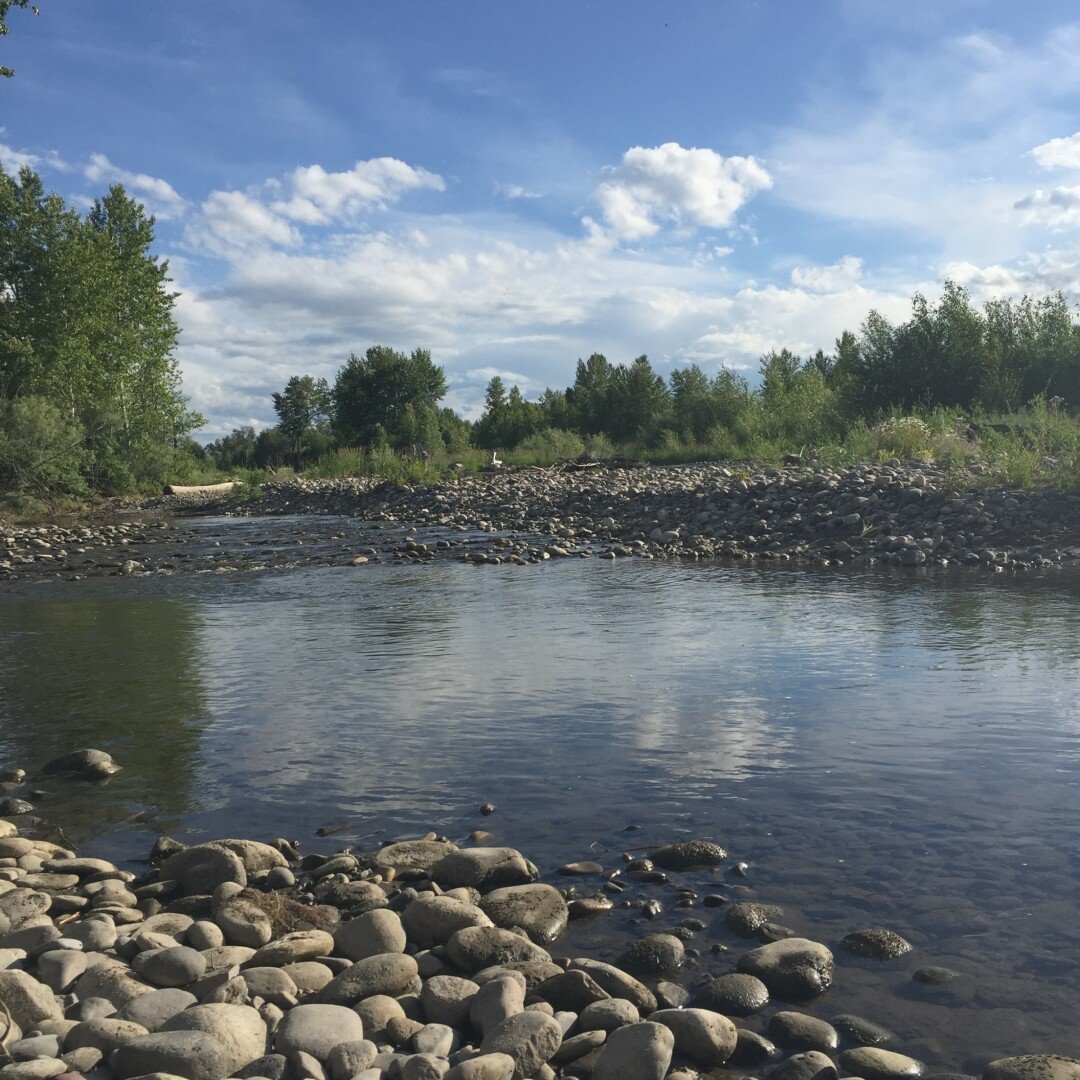The Headwaters Three Ways
Sarah Cairoli | Thursday Aug. 1st, 2019
Montana has almost 170,000 miles of river, but the 18 miles leading into the Missouri River’s headwaters are some of the most scenic in the Bozeman area. Although not considered the best fishing waters, the final stretches of the Jefferson, Madison, and Gallatin Rivers offer beautiful scenery, abundant wildlife, and the chance to channel your inner pioneer.
Lewis and Clark first arrived at the Headwaters in July of 1805. They brought with them Sacajawea, who had been kidnapped from this area as a child. They also brought with them John Colter, who would later thrash through these same river banks in his famous run from the Blackfeet. Floating this area is a relaxing way to truly immerse yourself in some of our legendary local history.
Driftboats, kayaks, and canoes are great choices for the Jefferson and Madison Rivers. They work on the Gallatin, too, but you might find that stretch of river gets a little tight for driftboats, depending on flow levels. Avoid the Headwaters during spring runoff when water is incredibly swift and unpredictable. After runoff, continue to be cautious where the rivers converge; swirling currents in these areas can be tricky to navigate. The Headwaters is not the place for inexperienced swimmers in inner tubes. In fact, the absence of inner tubes makes for some pretty peaceful floating.
If you are seeking a river adventure close to home or looking to emulate Lewis and Clark, float to the Headwaters three different ways this summer. For all three of these floats, you’ll pull your boat out at the boat launch at the north end of Headwaters State Park. Before heading home, stop at the park’s visitor center for a fascinating look at the history and geology of the area.
The Jefferson River
If you’d like to float the Jefferson, get out there as soon as spring runoff ends. By midsummer, this river is shallow, warm, and weedy, which makes fishing impossible and floating unpleasant. Be sure to bring bug spray; the rich riparian vegetation harbors some mosquitos, but this same vegetation is also a playground for deer, muskrats, and several bird species. Many stretches of this float feel very remote, and because it is less popular than the Madison River, it is easy to feel like you’re relaxing in the middle of nowhere.
Get on the river at the Drouillard fishing access site, just west of Three Forks. This is the longest of the floats to the Headwaters at just over eight miles. You’ll pass under I-90 about halfway through the float. Just before the highway, you’ll pass a large cliff wall covered in the nests of cliff swallows. The cool, deep water at this point in the float is a great place to try to catch some big trout. After the highway, you’ll find some good swimming holes before floating beneath the bridge on Old Town Rd. This is a popular spot—keep your head up lest someone jump off the bridge and inadvertently land in your boat. After this bridge, it is a leisurely float until the Jefferson blends with the Madison.
The Madison River
For a quick float into the Headwaters, jump in the Madison at the Blackbird fishing access site just off I-90. It is only three miles to the pull-out, but this section of river is so braided that you could easily make a day of it if you explored the side channels. This distance also makes for a fantastic shuttle situation because of the paved path between the two boat launches. Drop a bike at the pull-out before you launch; it’s an easy bike ride back to the truck and trailer and allows everyone to ride to the river in the same car, saving gas money and carbon emissions.
The best part of this float might be the large flocks of pelicans hanging out along the shore who don’t seem bothered by the presence of humans (or corgis). Deer are less tolerant, and their white tails often flash above the tall grasses as they dart from the shore. The slow pace and broad curves along this stretch of river are a great place to give the kids a turn at the oars; it’s generally an easy row, but there are a few riffles that pick up speed and pull boats toward the bank. Once the Madison and Jefferson converge (a stretch sometimes referred to affectionately as the “Mefferson”), there are several nice stretches of sandy beach if you stay to the left. These beaches are a good opportunity to stretch your legs, hunt for rocks, and cool your feet in some shallow water before joining the Gallatin River and concluding your float.
The Gallatin River
The float down the Gallatin River to the Headwaters is the most technical of the three options, with boulders, occasional logjams, and tricky turns that make it a tough float for beginners. Smaller boats, like canoes and kayaks, are easiest to maneuver along this six-mile stretch that begins at Logan Bridge, just off I-90.
Because this is the river less traveled, it has the most abundant wildlife of the three options to float to the Headwaters. This wild river meanders through river bottoms regularly frequented by moose. Several species of duck float these currents, which makes it an excellent stretch of river for a “cast and blast” adventure in the fall.
The floats along the Madison and Gallatin make lovely evening floats, especially considering the camping opportunities in Headwaters State Park. Pitch a tent in one of the park’s 17 campsites or rent a tipi to truly capture the historical spirit of the area. Remember to bring life jackets, sunscreen, and bug spray; Mother Nature will provide amazing scenery, abundant wildlife, and a few fish on the end of your line.
Sarah Cairoli loves to spend a lazy day on the river. She can be found at fishing access sites along the Madison, Jefferson, and Yellowstone or reached at scairoli30@hotmail.com
| Tweet |

